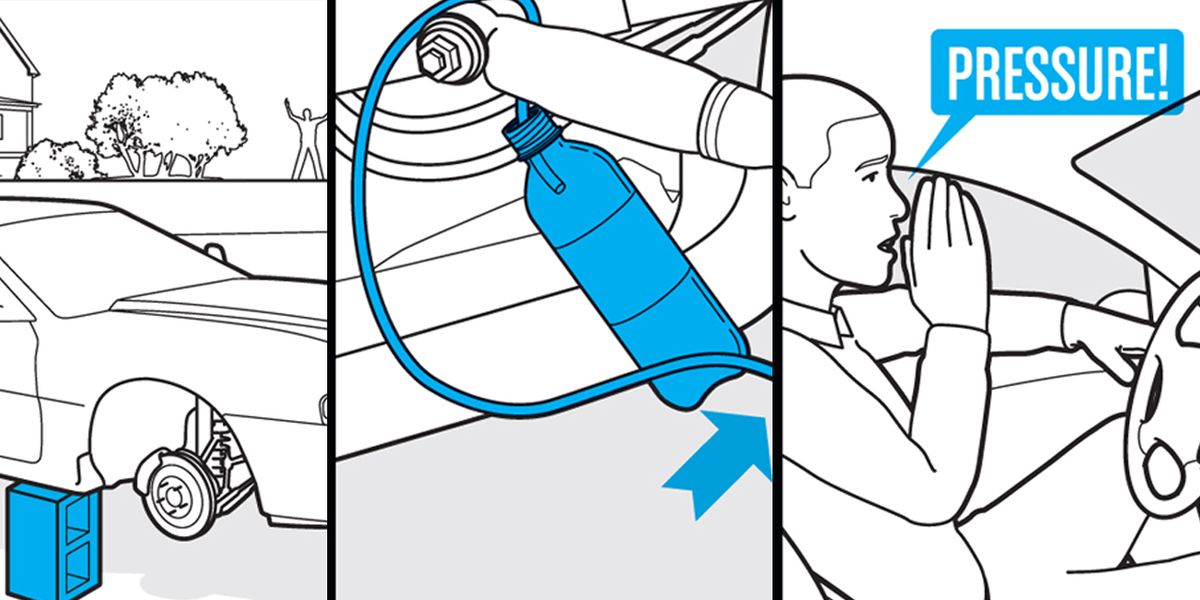How to Bleed Brakes by yourself are an important maintenance task for any vehicle to ensure optimal braking performance. Although it’s typically recommended to have a second person help with this task, it is possible to bleed brakes by yourself with the following steps:
Note: The process may vary slightly depending on the specific make and model of your vehicle, so refer to your vehicle’s owner manual for detailed instructions.
Materials needed:
- Brake fluid
- Brake bleeding kit (can be purchased at an auto parts store)
- Wrench or socket set
- Clear plastic tubing
Steps:
- Locate the brake bleeder valve on each brake caliper or wheel cylinder. The valve is typically located on the back side of the caliper or wheel cylinder and will have a rubber cap over it.
- Open the brake fluid reservoir under the hood of your vehicle and fill it with fresh brake fluid.
- Attach one end of the clear plastic tubing to the bleeder valve and the other end to a clear container partially filled with brake fluid.
- Using a wrench or socket set, loosen the bleeder valve slightly. Do not remove the valve completely.
- Press the brake pedal slowly and steadily to the floor and hold it there.
- While the pedal is still pressed, open the bleeder valve completely. You should see brake fluid and air bubbles flowing out of the valve and into the container. Continue holding the pedal to the floor until no more bubbles are seen.
- Close the bleeder valve tightly and release the brake pedal slowly. Repeat steps 5-7 for each brake caliper or wheel cylinder, starting with the one furthest from the master cylinder and working your way closer.
- Check the brake fluid level in the reservoir periodically to ensure it doesn’t run low. Top off as needed.
- After bleeding all four wheels, pump the brake pedal several times to ensure the brakes are working properly.
- Test drive the vehicle and make sure the brakes feel firm and responsive.
Note: Make sure to dispose of old brake fluid properly as it can be hazardous to the environment. Also, if you’re not comfortable with doing this task yourself, it’s always best to have a professional mechanic handle it.
FAQs
- Why is it important to bleed brakes?
Bleeding brakes remove any air that may have entered the brake lines, which can cause a spongy or soft brake pedal and decrease braking performance. Bleeding the brakes ensures that there is no air in the system and that the brake fluid is flowing smoothly. - Can I bleed brakes by myself or do I need a second person?
While it’s recommended to have a second person to help with bleeding brakes, it is possible to do it by yourself with the right tools and technique. However, it may be more difficult and take longer to complete the task without assistance. - How often should brakes be bled?
It’s recommended to bleed brakes every 2-3 years or as specified in the vehicle’s owner manual. However, if you notice a soft or spongy brake pedal or decreased braking performance, bleeding the brakes should be done immediately. - Can I reuse old brake fluid?
No, old brake fluid should be disposed of properly and not reused. Brake fluid absorbs moisture over time, which can cause corrosion and damage to the brake system. Always use fresh brake fluid when bleeding the brakes. - What type of brake fluid should I use?
Refer to your vehicle’s owner’s manual for the recommended type of brake fluid. Different types of brake fluid have different properties and mixing them can be harmful to the brake system. Always use the recommended type of brake fluid.
Read This: How many Pounds to a Cup
